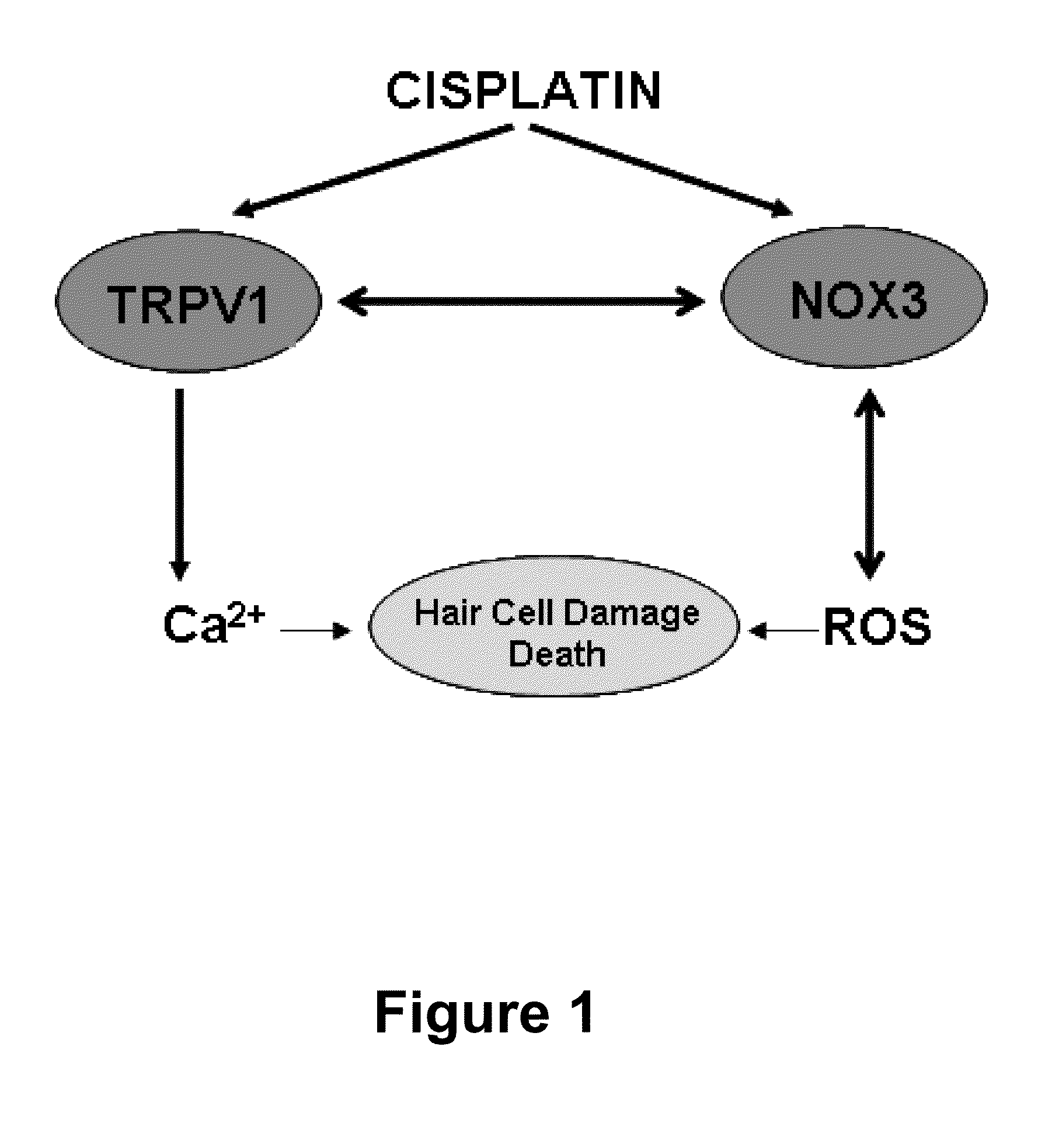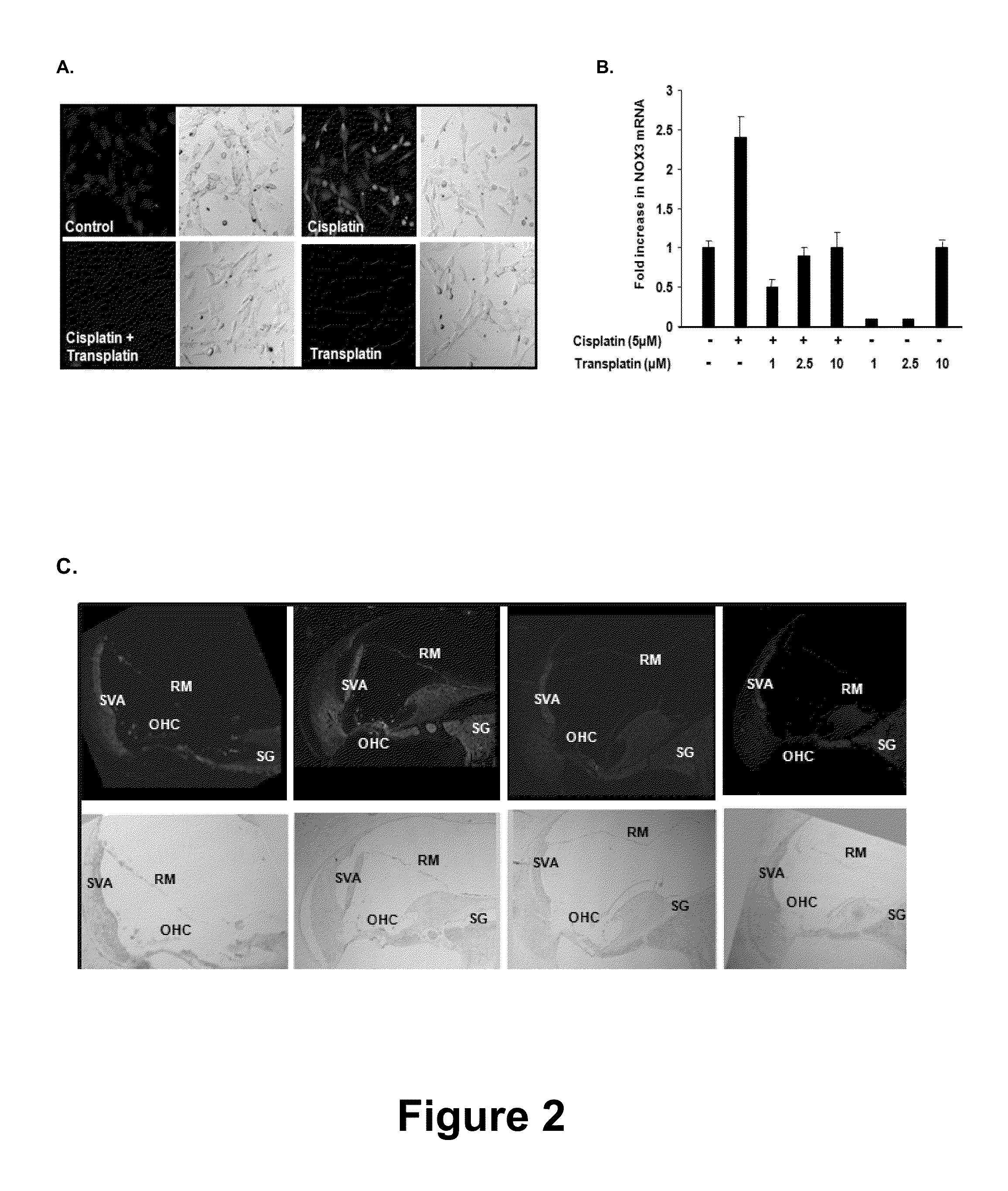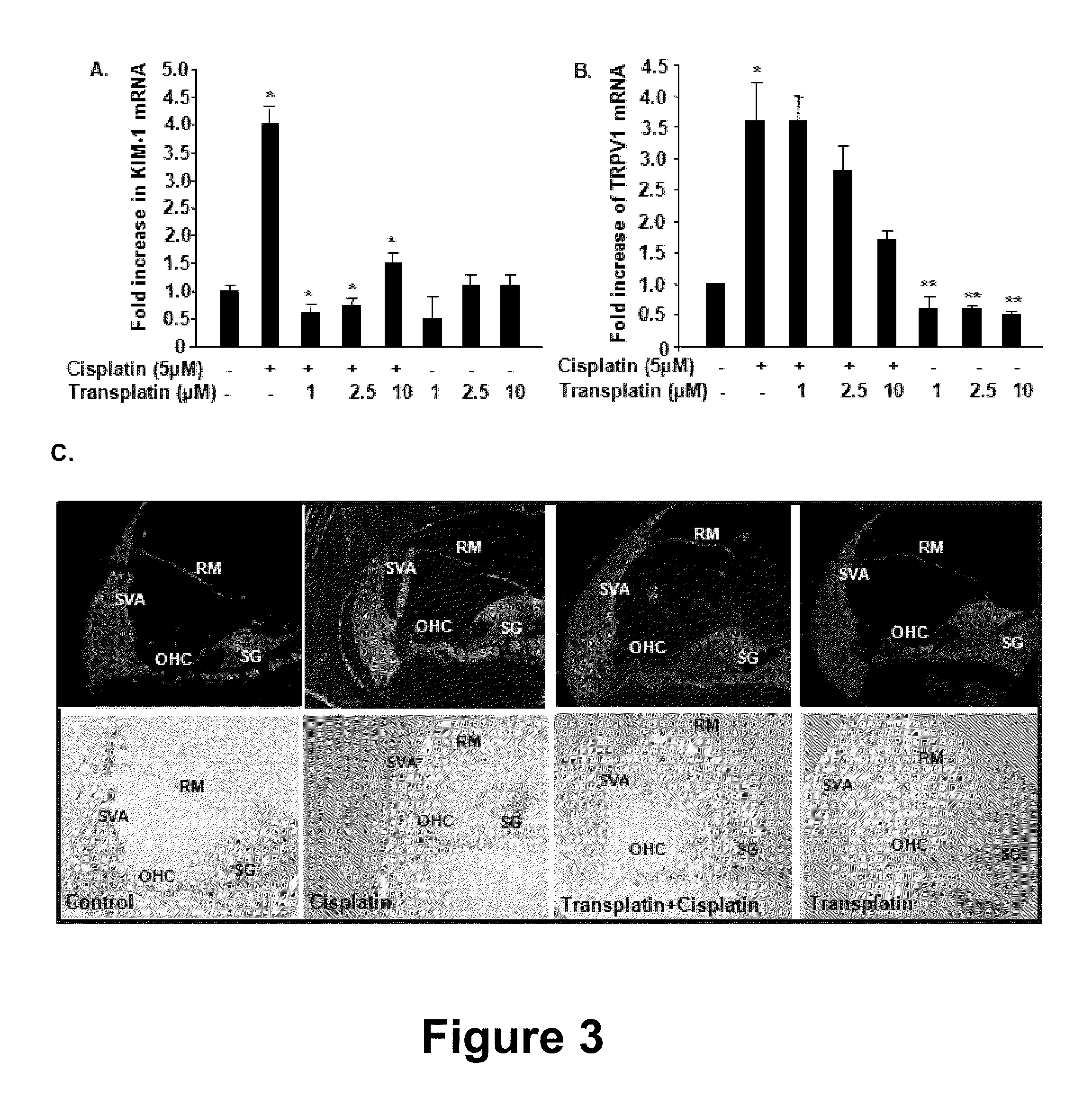Use of transplatin to prevent hearing loss
a technology of transplatin and hearing loss, which is applied in the direction of biocide, heavy metal active ingredients, drug compositions, etc., can solve the problems of severe ototoxicity, neurotoxicity, nephrotoxicity, etc., and achieve the effect of preventing ototoxic effects and preventing nephrotoxic effects
- Summary
- Abstract
- Description
- Claims
- Application Information
AI Technical Summary
Benefits of technology
Problems solved by technology
Method used
Image
Examples
example 1
Transplatin Reduces Cisplatin-Induced Reactive Oxygen Species (ROS) Generation
[0067]Imaging of ROS generation was done as previously described (P. Puntambekar et al., Essential role of Rac1 / NADPH oxidase in nerve growth factor induction of TRPV1 expression, J. NEUROCHEM. 95: 1689-1703 (2005)). Briefly, UB / OC-1 cells were pretreated with transplatin and or cisplatin, and incubated with H2DCFDA dye for 30 minutes. H2DCFDA fluorescence was detected by confocal microscopy, at 30 minutes following cisplatin administration. Cisplatin (2.5 μM) increases ROS generation in UB / OC1 cells. This increase was observed following a 30 min exposure to cisplatin. FIG. 2A is a panel of photomicrographs of UB / OC-1 cells treated with cisplatin (2.5 μM) for 30 min, showing a marked increase in ROS generation, as determined by H2DCFDA fluorescence. The observed increase in ROS generation was significantly reduced in cells pretreated with transplatin (1 μM) (FIG. 2A). This transplatin concentration is in t...
example 2
Transplatin Reduces Cisplatin-Induced NOX3 Generation
[0068]NOX3 expression represents a stress response by the cell in response to cisplatin. To determine whether transplatin could alter cisplatin-induced NOX3 expression we used quantitative real time RT PCR.
[0069]RNA was isolated by adding 1 ml TRI reagent to 100 mg of cochlear tissue or 0.5 ml TRI reagent per well of each six well plate. Tissues were homogenized in TRI reagent using a Polytron (setting 7, 15 sec) and centrifuged at 12,000×g for 10 min at 4° C. The remainder of the procedure was identical to that described in D. Mukherjea et al., NEUROSCIENCE 139:733-740 (2006).
[0070]For real time reverse transcriptase polymerase chain reaction (RT-PCR), one microgram of total RNA was converted to cDNA using iScript cDNA Synthesis Kit (Bio-Rad, Hercules, Calif.) and sample preparations were performed essentially as previously described (D. Mukherjea et al., NEUROSCIENCE 139:733-740 (2006)). Amplification and detection was performed...
example 3
Transplatin Decreases Cisplatin Induced KIM-1 and TRPV1 Expression
[0073]Since cisplatin-stimulated ROS generation promotes the expression of two significant proteins, TRPV1 (P. Puntambekar et al, Essential role of Rac1 / NADPH oxidase in nerve growth factor induction of TRPV1 expression, J. NEUROCHEM 95, 1689-1703 (2005)) and KIM-1 (D. Mukherjea et al., NEUROSCIENCE 139:733-740 (2006)), quantitative real time RT PCR substantially as described above in Example 2 was used to determine whether transplatin reduced the expression of these genes in cells treated with cisplatin. UB / OC1 cells were pre-treated with transplatin (1, 2.5 and 10 μM) for 30 minutes prior to cisplatin (5 μM) treatment for 24 h. Total RNA was isolated, reverse transcribed and real time RT-PCR performed. All data are presented as mean+standard error. The RT PCR data are shown in FIGS. 3A and 3B. As shown in FIG. 3A, cisplatin treatment increases KIM-1 mRNA expression by 4 fold, which increase was attenuated to control...
PUM
 Login to View More
Login to View More Abstract
Description
Claims
Application Information
 Login to View More
Login to View More - R&D
- Intellectual Property
- Life Sciences
- Materials
- Tech Scout
- Unparalleled Data Quality
- Higher Quality Content
- 60% Fewer Hallucinations
Browse by: Latest US Patents, China's latest patents, Technical Efficacy Thesaurus, Application Domain, Technology Topic, Popular Technical Reports.
© 2025 PatSnap. All rights reserved.Legal|Privacy policy|Modern Slavery Act Transparency Statement|Sitemap|About US| Contact US: help@patsnap.com



